We used San Cristóbal as our second base after Santa Cruz. Having seen most of the wildlife we wanted to see already on North Seymour, Bartolomé and Santa Cruz, San Cristóbal was all about the other natural wonders around the islands… and some wildlife, too. There is literally wildlife everywhere in the Galápagos.

Puerto Baquerizo Moreno
Puerto Baquerizo Moreno is the San Cristóbal equivalent of Puerto Ayora on Santa Cruz, but much smaller and even more laid-back. Most days are pretty sleepy, though the weather is always pretty sunny.

There were not nearly as many housing or food options as Puerto Ayora, and prices seemed higher. However, the town was newer and cleaner, and the pier area is close to everything, while nice beaches are never far away.
Beaches of San Cristóbal
Playaman is the closest one to town – so close it’s practically in town. On weekends this is a hip and happening place, filled with locals and food vendors. We even had reality singing/karaoke in the background to complete the ambiance.
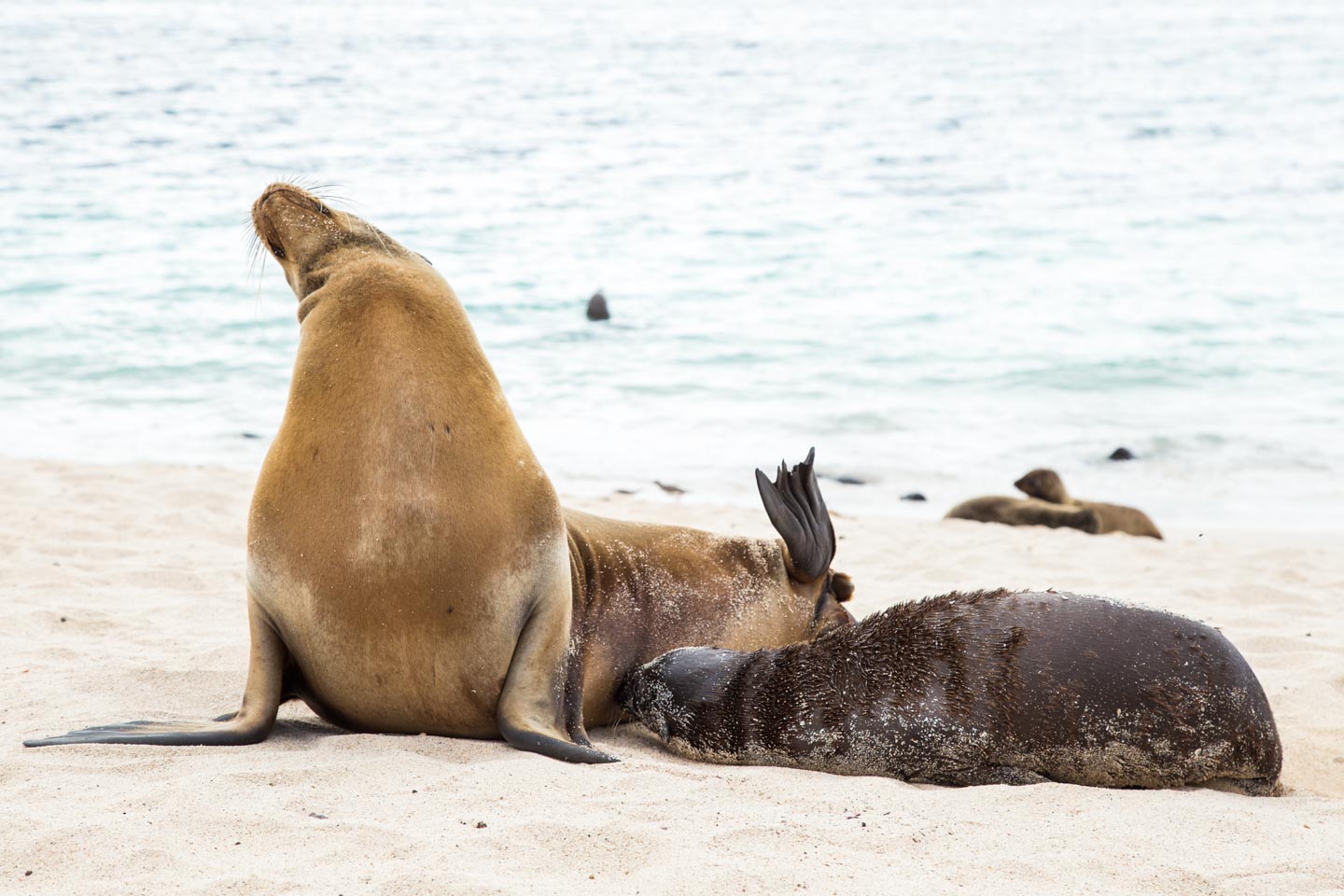
It was here at Playaman where we saw an orphaned sea lion pup who couldn’t find its mom. This orphan kept going round and round to all the other sea lion moms asking to feed. All of the sea lion moms refused, often biting and throwing the orphaned pup away. It was heartbreaking… but a reality of nature. The poor pup was so hungry at one point it was chewing on a branch.

Playa Punta Carola was similar to Playaman, just a bit further away and more deserted. There were lots of sea lions here as well, and it was at this beach a sea lion pup slowly crawled its way right up to me and then right past me. It was adorable! I was in love.

Bahia de Rosa Blanca was the first stop in our 360 tour of the island. On the eastern side of the island unprotected from the ocean waves, Bahia de Rosa Blanca was located in a protected bay, providing refuge from rough seas. The sand was so white and incredibly soft, gently sloping into the water.

Right next to the beach was a shallow lagoon. Isolated from the ocean due to the low tide, it trapped dozens of white-tipped sharks and a sea turtle in a small, shallow and confined space. We really enjoyed snorkeling here and getting close to these creatures.
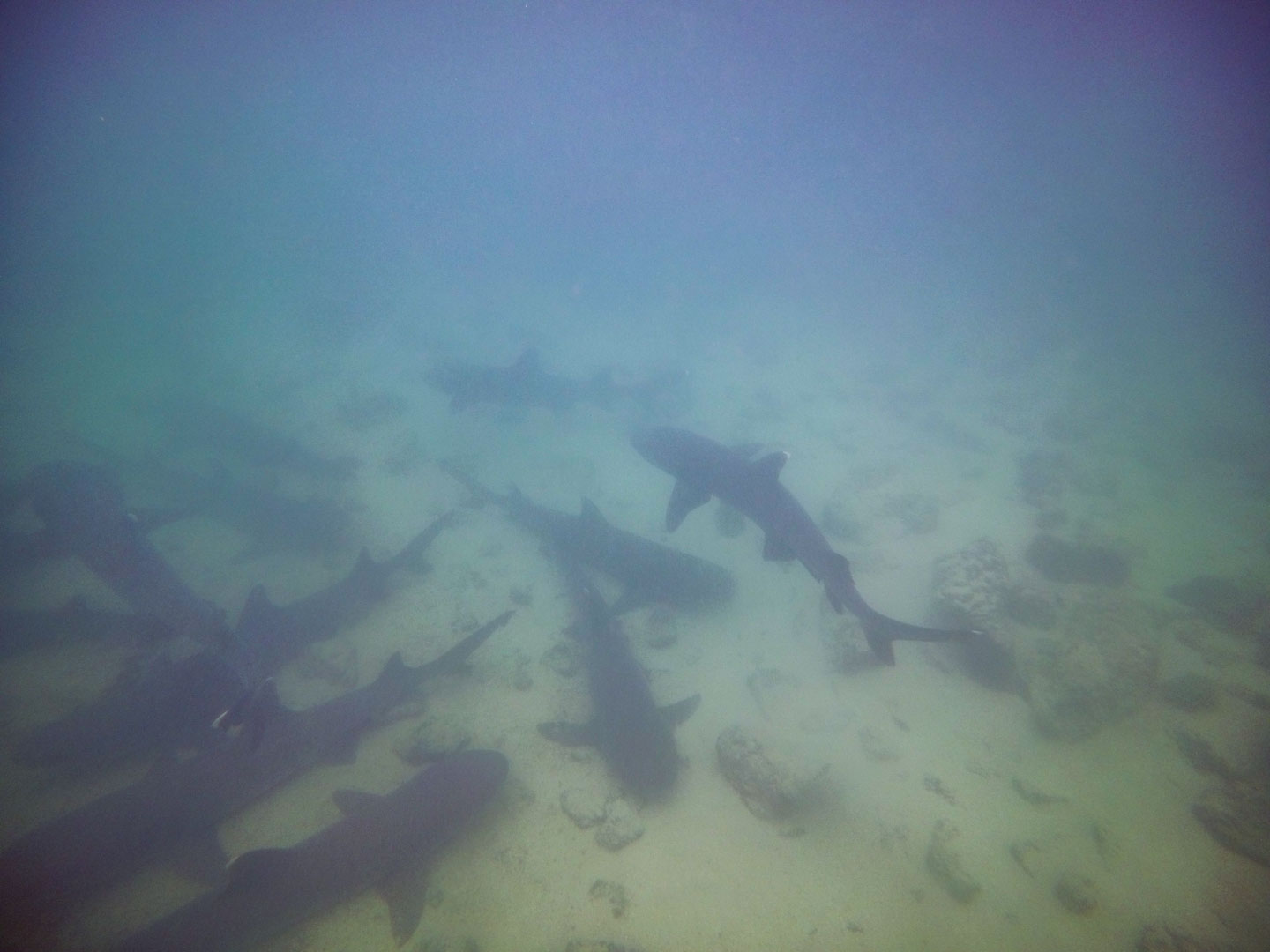
The second beach stop on our 360 tour was Bahia Sardina, another spectacular beach with wide stretches of soft white sand and breathtaking scenery. Here, we saw many pelicans diving to catch their lunch.

Similar to Bahia Sardina, Cerro Brujo is a yet another beautiful white sand beach on San Cristóbal, dotted with black volcanic rock and lush green bushes. Part of the beach was formed by volcanic activity while another part was created organically through exposed ocean floor.
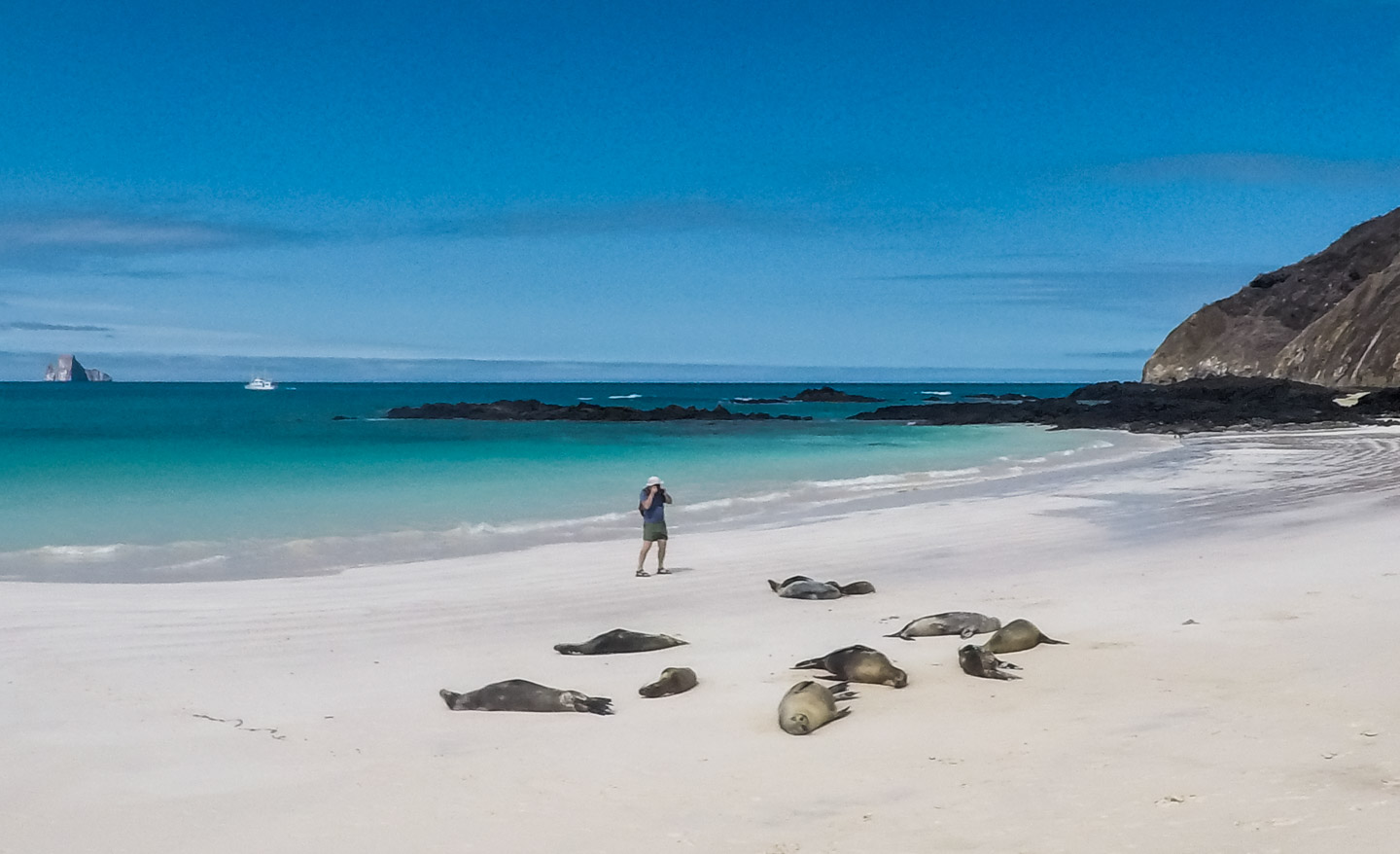
All of the beaches around San Cristóbal Island were amazing. Who knew the volcanic Galápagos Islands had such stunning white soft sand?
Punta Pitt
The easternmost point of San Cristóbal Island, Punta Pitt is known for its wild birds. There are red-footed boobies here! Recall the blue-footed boobies on North Seymour? These ones are very similar, but with red feet instead of blue ones.

We saw several of them flying back and forth from their nests, cohabiting the same cliff with blue-footed boobies as well as nazca boobies.

It was also around Punta Pitt where we got really lucky and had the chance to sail with hundreds of dolphins! There were so many pods everywhere around us, it was hard to pick a direction to look at.

Sometimes they were so close we felt like we could touch them.
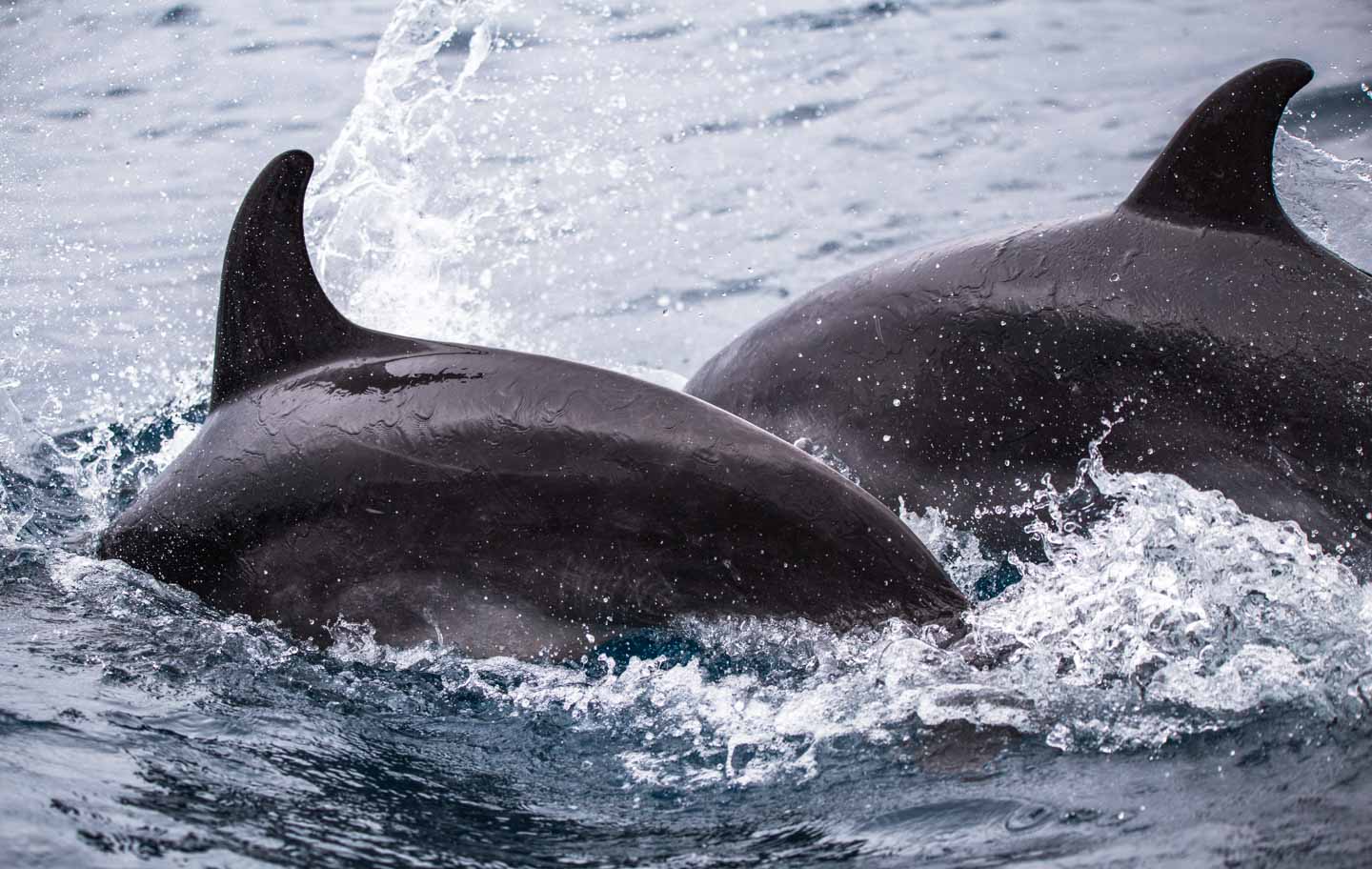
They jumped and flipped and gave us a private acrobatic show in the rough and choppy Pacific Ocean.

We had thought we saw plenty of wild dolphins in the Maldives, but this blew that completely out of the water.
Kicker Rock Snorkeling and Diving
Kicker Rock is one of the most famous snorkeling and diving spots in all of the Galápagos. Its unique formation of compacted volcanic ash eroded to the shape of a sleeping sea lion (hence the name Léon Dormido in Spanish), which attracts a vast array of wildlife, both above and below the water.

The small channel formed in between the two monoliths is what makes this place so special for underwater activities – schools of white-tipped and Galápagos sharks, rays, sea turtles, sea lions and even hammerhead sharks can be seen in the channel.

We visited the (very) cold waters of Kicker Rock twice during our stay in San Cristóbal – first for snorkeling as part of our 360 tour and another time for scuba diving. Both days provided us with similar visibility at around 15 meters and pretty much the same wildlife sightings – we saw Galápagos sharks, white-tipped sharks, as well as sea turtles.

What made the Kicker Rock diving experience stand out was the sheer scale and proximity of marine wildlife. While we spotted a few turtles and only three sharks far away during our snorkeling visit (the channel is 20 meters deep), we got up close and personal with hundreds of them during the dive.
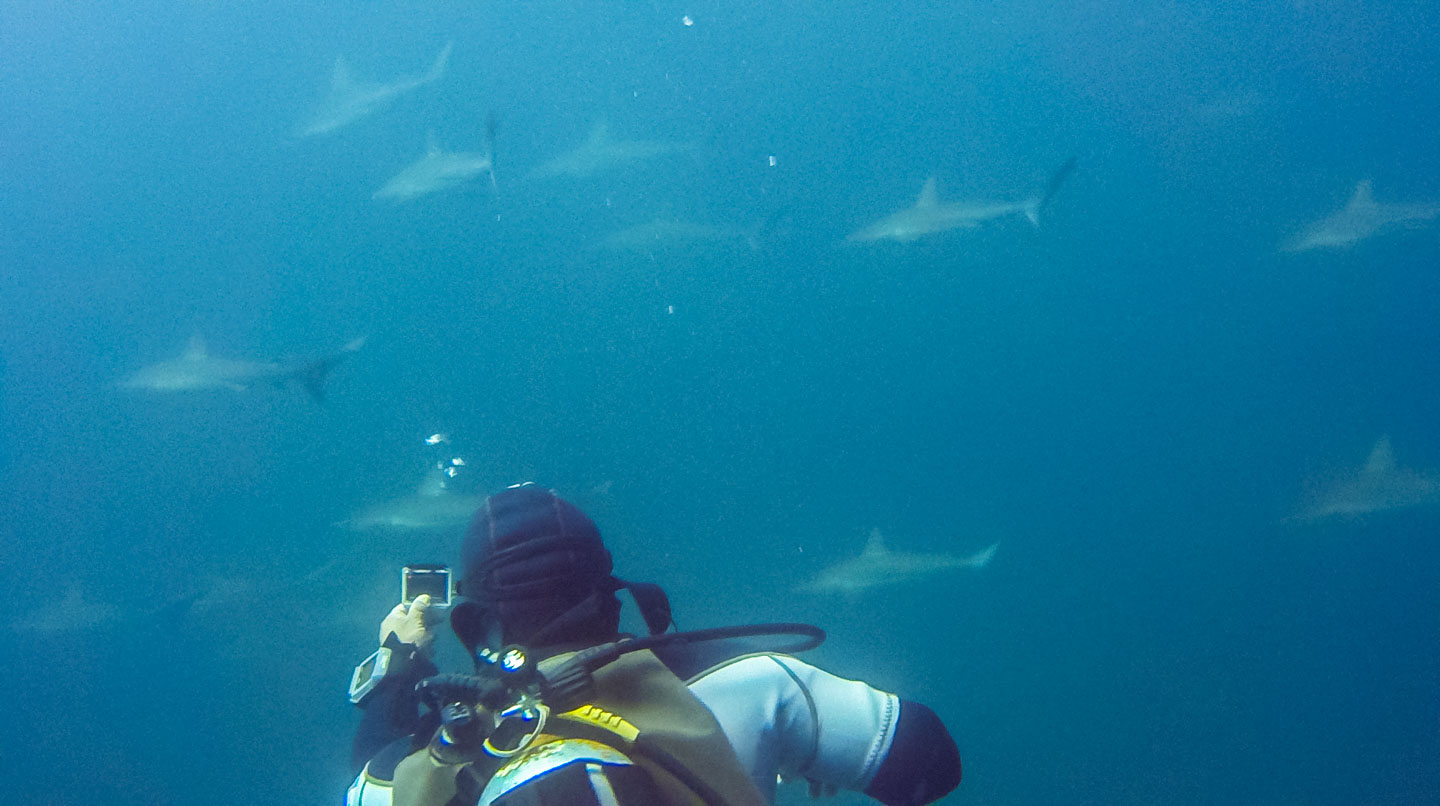
The sharks swam right beside us, completely ignoring our presence. It was one of the most incredible underwater experiences that we’ve ever had!

Unfortunately, we missed the hammerhead sharks this time – they are a migratory species and needed a few more weeks (and warmer water) until they reached the area. Nonetheless, swimming with sharks was an unforgettable experience.
Tijeretas / Frigate Hill
Back in Puerto Baquerizo Moreno, we did a short hike to the local interpretation center, where many displays about the history and current challenges of the Galápagos Islands showed us how difficult it is to explore yet preserve such a special place.

After the interpretation center, the trail continued to an overlook point called Frigate Hill (or Tijeretas in Spanish). At the top, we could see the Pacific Ocean extending into the horizon, while a small bay protected the delicate reef.
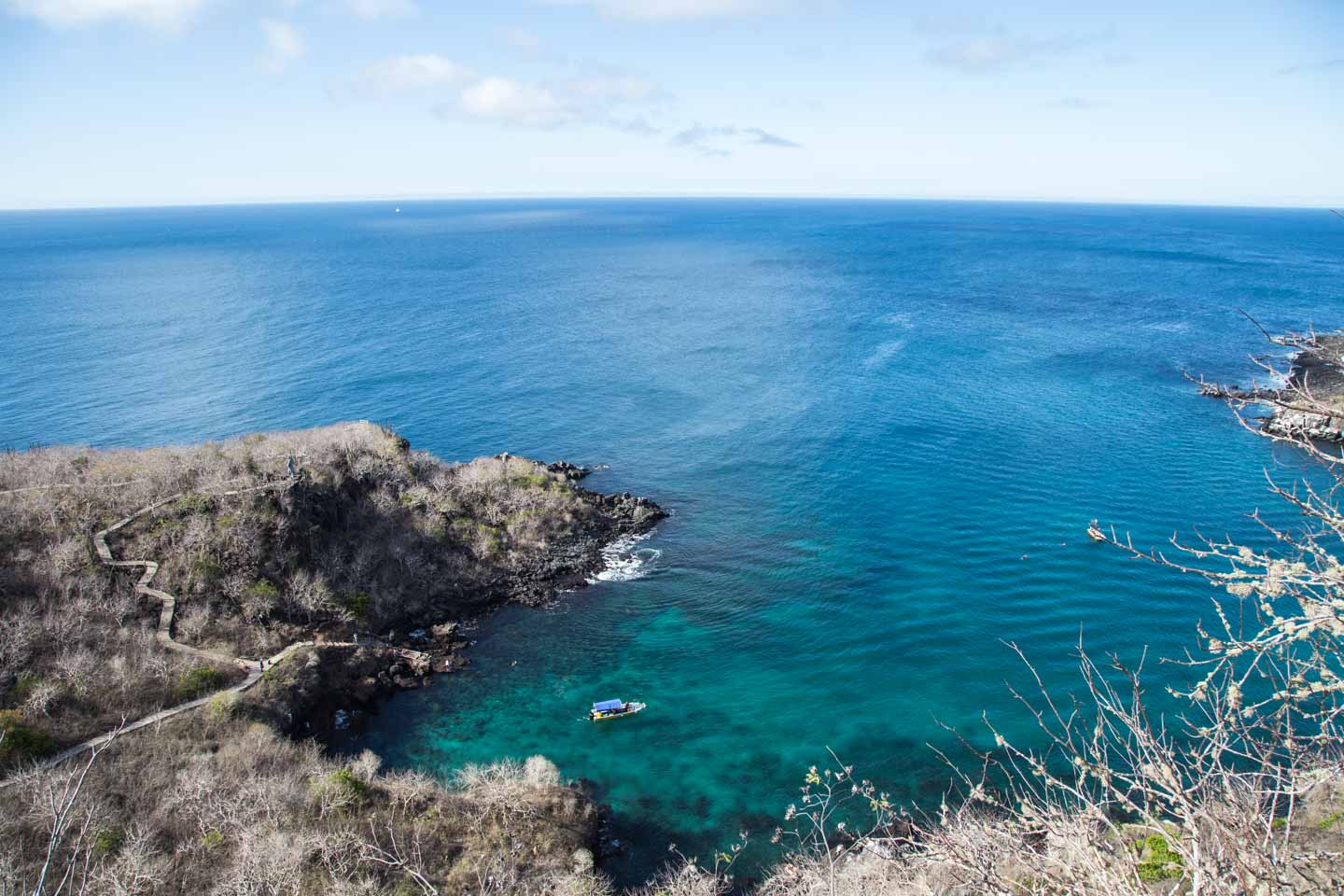
On the way back, there was a vantage point overlooking Puerto Baquerizo Moreno. We stopped to admire the view and reflect on our visit to the archipelago, as our time here was coming to an end.

San Cristóbal was our last island in our tour of the Galápagos and it presented us with incredible scenery as well as a few last days with all the wonderful wildlife. We will miss this place!
